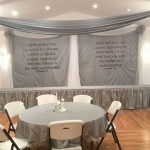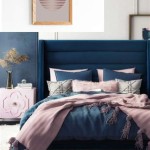Small Living Room Furniture Decorating Ideas
Furnishing a small living room can be challenging. Maximizing space while maintaining a stylish and functional area requires careful planning and clever furniture choices. This article explores various decorating ideas to create a comfortable and inviting small living room, focusing on furniture selection, layout, and visual enhancements.
Choosing the Right Furniture
Selecting furniture appropriate for a small living room is crucial. Oversized pieces can quickly overwhelm the space, creating a cramped and cluttered feel. Opting for smaller-scale furniture allows for better traffic flow and maximizes usable floor space. Consider loveseats or apartment-sized sofas instead of large sectionals. Armless chairs can create a sense of openness, while slim profile furniture with raised legs helps create the illusion of more space by revealing more floor area.
Multifunctional furniture plays a vital role in maximizing space in small living rooms. Pieces that serve dual purposes, such as storage ottomans, sofa beds, or coffee tables with built-in drawers, provide valuable storage solutions while minimizing clutter. These versatile pieces help keep belongings organized and out of sight, contributing to a cleaner, more spacious aesthetic.
The material and color of furniture also impact the perceived size of a room. Light-colored furniture, such as white, cream, or pastel shades, reflects light and makes the space feel larger and airier. Similarly, furniture made from materials like glass or acrylic can create a sense of visual lightness, preventing the room from feeling too heavy or closed in. Transparent or reflective surfaces also help bounce light around the room, further enhancing the illusion of spaciousness.
Strategic Furniture Arrangement
The arrangement of furniture significantly impacts the flow and feel of a small living room. Creating a focal point, such as a fireplace or a window with a pleasing view, and arranging furniture around it can create a sense of purpose and visual interest. Avoid pushing all furniture against the walls, as this can actually make the room feel smaller. Pulling furniture slightly away from the walls can create a sense of depth and spaciousness.
Utilizing vertical space is essential in maximizing storage and visual appeal in a small living room. Tall bookshelves or narrow storage cabinets draw the eye upward, creating the illusion of higher ceilings. These vertical elements also offer valuable storage solutions, helping to keep clutter at bay and maintain an organized, spacious feel. Incorporating wall-mounted shelves or floating cabinets further enhances this effect while freeing up valuable floor space.
Creating designated zones within the living room can help define different areas for specific activities, even in a small space. A reading nook with a comfortable armchair and a small side table, or a dedicated work area with a compact desk and chair, can help organize the space and make it feel more functional. Clearly defined zones contribute to a more organized and spacious feel, allowing for multiple activities within a limited area.
Visual Enhancements and Decor
Mirrors are a powerful tool for creating the illusion of space in small living rooms. Strategically placed mirrors can reflect light and visually double the size of the room. Placing a large mirror opposite a window can maximize natural light and create a sense of depth. Using mirrored furniture or decorative accents can further enhance this effect and add a touch of elegance to the space.
Lighting plays a crucial role in creating the illusion of spaciousness. Ample natural light can make a small room feel significantly larger. Maximizing natural light sources by keeping windows unobstructed and using light-colored curtains or blinds can enhance the sense of openness. Adding strategically placed artificial lighting, such as floor lamps, table lamps, or wall sconces, can brighten up dark corners and further enhance the illusion of space.
The choice of color scheme can significantly impact the perceived size of a small living room. Light and neutral colors, such as white, beige, or light gray, reflect light and create a sense of airiness. Using these colors for walls, furniture, and larger decorative elements can make the room feel more open and spacious. Adding pops of color through smaller accessories, such as throw pillows, rugs, or artwork, can add personality and visual interest without overwhelming the space.
Minimizing clutter is essential in maintaining a spacious and organized feel in a small living room. Regular decluttering and utilizing smart storage solutions can help keep belongings organized and out of sight. Incorporating baskets, bins, and other storage containers can help maximize storage space and minimize visible clutter, contributing to a cleaner and more spacious aesthetic.

Small Living Room Design Ideas

10 Stunning Small Living Room Ideas To Maximize Space

How To Decorate A Small Living Room Forbes Home
:max_bytes(150000):strip_icc()/241791572_212003384294928_1925123565378044744_n-3dceead11099472ca283f51eea10a0f3.jpg?strip=all)
52 Small Living Room Ideas To Maximize Space And Style

Small Living Room Design Ideas Stunning Of Rooms Home S Remo Long Narrow

8 Decorating Ideas For Styling A Small Living Room Ruggable Blog
:max_bytes(150000):strip_icc()/154844841_1913837928767303_4703053855314656226_n-7776f09f3d67417caf5a7bd062c1acd1.jpg?strip=all)
52 Small Living Room Ideas To Maximize Space And Style

9 Nifty Small Living Room Decorating Ideas Canvas Printers

15 Apartment Living Room Design Ideas And Examples

15 Small Living Room Design Ideas You Ll Want To Steal







